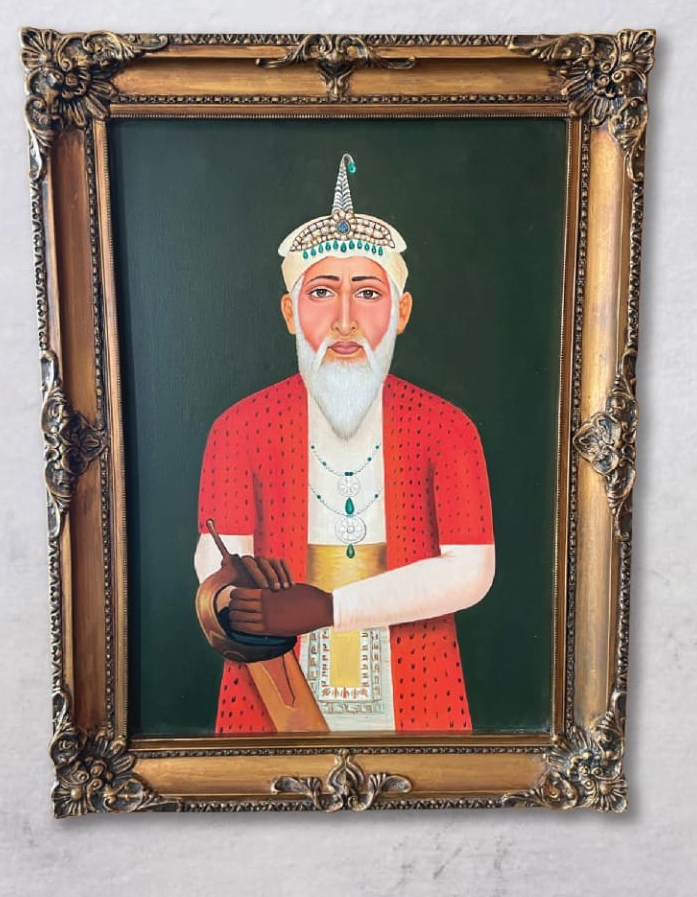Developing Hyderabad, Asaf Jah 1
Asaf Jah I, the founder of the Asaf Jahi dynasty and the first Nizam of Hyderabad, played a key role in reducing Mughal control over the Deccan region. This after he observed that the development of Hyderabad and the welfare of the people of the state, were being ignored.
This shift was not abrupt but a gradual and strategic process that enabled him to assert autonomy while technically remaining a vassal of the Mughal Empire. As the first Nizam of Hyderabad Asaf Jah 1 realized that, abruptly cutting all ties with the Moguls, could result in aggressive external competition. A well thought of plan was devised and gradually implemented

Asaf Jah I, the founder of the Asaf Jahi dynasty and the first Nizam of Hyderabad, played a key role in reducing Mughal control over the Deccan region. This after he observed that the development of Hyderabad and the welfare of the people of the state, were being ignored.
This shift was not abrupt but a gradual and strategic process that enabled him to assert autonomy while technically remaining a vassal of the Mughal Empire. As the first Nizam of Hyderabad Asaf Jah 1 realized that, abruptly cutting all ties with the Moguls, could result in aggressive external competition.
A well thought of plan was devised and gradually implemented. Here are the key points on how Asaf Jah I reduced Mughal control and deployed plans to develop Hyderabad and the Deccan region:
APPOINTMENTS ON MERIT AND LOYALTY
Asaf Jah I (Mir Qamar-ud-din Khan) was initially a high-ranking noble in the Mughal court and held titles like Chin Qilich Khan and Nizam-ul-Mulk. In 1713, the Mughal emperor Farrukhsiyar appointed him as the Subedar (governor) of the Deccan. Though loyal at first, Asaf Jah I saw the weakening state of the Mughal Empire and recognized the opportunity to consolidate power in the south. He had a well developed vision, to develop Hyderabad and its surroundings.
BATTLE OF SHAKAR KHEDA (1724)
The decisive step came in 1724, when Asaf Jah I defeated Mubariz Khan, another Mughal appointee who controlled parts of the Deccan. This battle effectively eliminated any rival Mughal influence in the region and allowed Asaf Jah I to govern independently. The first Nizam was aware that significant authority would be required if, development in Hyderabad was to really happen. This environment was considered to be important even for, subsequent Nizam rulers.
INDEPENDENT RULE ESTABLISHED
After the battle with Mubariz Khan, Asaf Jah I declared himself Nizam of Hyderabad and made the region his de facto independent domain. Although he continued to recognize the Mughal emperor in name and sent occasional tributes, his rule was entirely autonomous. The ability to minimalize moghul influence over the Deccan was something that, proved highly beneficial to all the Nizams. Lasting over 7 Nizams, the rule ended in 1948 when the Indian government, included Hyderabad into the rest of India.
ADMINISTRATIVE INDEPENDENCE
Asaf Jah I set up his own administration, revenue collection systems, military structure, and courts of justice—independent of Mughal oversight. Policies were made and implemented for the betterment of Hyderabad and its people. He appointed officials based on merit rather than Mughal aristocratic lineage or religious affiliations, enhancing administrative efficiency. This was a positive move as administrative officers, received better cooperation from the people. There was lower internal turmoil, and Asaf Jah 1 could focus on external enemies and ill wishers.
DIPLOMATIC BALANCE
The first Nizam carefully maintained a formal allegiance to the Mughals to avoid provoking conflict, but in practice, he exercised full control over the Deccan region. His diplomacy allowed him to keep both the Mughal court and rival regional powers like the Marathas in check.
In short, Asaf Jah I gradually reduced Mughal control over the Deccan by defeating rival Mughal officials, establishing administrative and military independence, and cleverly maintaining a symbolic allegiance to the Mughal emperor. This laid the foundation for the Hyderabad State, which remained a powerful princely state for over two centuries.
ASAF JAH I LEGACY
In short, Asaf Jah I gradually reduced Mughal control over the Deccan by defeating rival Mughal officials, establishing administrative and military independence, and cleverly maintaining a symbolic allegiance to the Mughal emperor. This laid the foundation for the Hyderabad State, which remained a powerful princely state for over two centuries.
Summarizing the words of knowledgeable historians - The vision and efforts of Asaf Jah I did not just build a dynasty, but also laid the groundwork for a balanced rule—where royal wealth and public welfare went hand in hand. His legacy ensured that Hyderabad developed into a thriving state known for its culture, infrastructure, and administrative efficiency.
